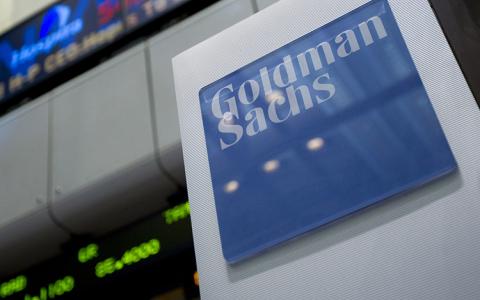
Goldman Sachs Group Inc dwarfed Wall Street estimates as its fourth-quarter profit more than doubled, powered by another blowout performance at its trading business and a surge in fees from underwriting a series of blockbuster IPOs.
Revenue from global markets, which houses the bank’s trading business, registered its best annual performance in a decade as investors churned their portfolios at the end of a roller-coaster year for financial markets amid the COVID-19 pandemic.
Trading, Goldman’s main revenue-generating engine, surged 43% annually. On a quarterly basis, revenue from the unit jumped 23% to $4.27 billion.
Investment banking revenue jumped 27% to $2.61 billion during the quarter, driven mainly by equity underwriting, which was up 195% from the same period last year.
Equities trading and investment banking revenues both comfortably beat forecasts, Oppenheimer analyst Chris Kotowski said.
“It was an exceptionally strong quarter,” he said.
The bank’s shares surged 2.6% in early trading, adding to a 20% gain in the past year. Goldman’s shares hit a record high of $307.87 last week, giving it a market cap of over $100 billion.
Total revenue climbed 18% to $11.74 billion. The bank’s net earnings applicable to common shareholders rose to $4.36 billion, or $12.08 per share, in the quarter ended Dec. 31.
Analysts had expected a profit of $7.47 per share on average, according to IBES data from Refinitiv.
“We hope this year brings much needed stability and a respite from the pandemic, but we remain ready to handle a wide range of outcomes,” Chief Executive David Solomon said.
BUMPER YEAR
Goldman’s latest performance was all the more impressive, as it comfortably absorbed a $3-billion hit to its annual profits, after reaching a settlement with the U.S. Department of Justice and other U.S. and overseas regulators over its role in Malaysia’s 1MDB corruption scandal.
Revenue at all four businesses rose in the final quarter. Goldman’s asset management businesses also benefited from higher lending and debt investments, rising 7% to $3.21 billion.
Unlike larger peers JPMorgan and Bank of America, Goldman has a relatively small consumer business, which has limited its exposure to loan defaults amid the pandemic and allowed it to focus on its core strength of closing deals.
Even so, Solomon is doubling down on Marcus, its consumer bank, making it a cornerstone of his broader strategy to make Goldman look more like a typical Main Street lender.
Consumer banking revenue rose 52% in the quarter to $347 million and jumped 40% to $1.21 billion on an annual basis. The business is still minuscule compared to other large revenue-generators at the firm, representing just a fraction of the total in 2020.
Goldman on Tuesday re-affirmed a target to grow consumer deposits to over $125 billion over five years.
Since taking over the reins from Lloyd Blankfein in 2018, Solomon has emphasized that he wants to reduce the bank’s reliance on trading and investment banking. He wants to grow businesses with more predictable businesses like consumer banking, mass-market wealth management and managing cash for companies.
Goldman Sachs reiterated the three-year targets it set for profitability and expense savings last January, as it stayed on track with its long-term cost-cutting and returns initiatives.
The bank’s return on equity, a key metric of profitability, stood at 21.1% during the quarter.
Full-year provision for credit losses jumped to $3.1 billion, compared to $1.07 billion last year, as the bank set aside additional reserves due to the impact of the COVID-19 pandemic.
This article originally appeared on Reuters.



